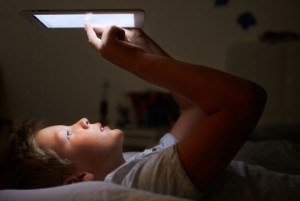We all have dreams here and there. It’s that fuzzy, confusing feeling when you wake up and debate whether what you were just thinking about was real or not. Other times, you wake up, even more confused, because you have this instinct feeling that you had a dream, but now it is all a blur. Ever wonder why this happens? Why do we remember some, and then forget others? And ultimately: What is the science behind the memory of our dreams?
While there has always been a great interest in the interpretation of human dreams, it wasn’t until the end of the nineteenth century that Sigmund Freud put forth some of the most widely-known modern theories of dreaming. Freud’s theory centred around the notion of repressed longing — the idea that dreaming allows us to sort through unresolved, repressed wishes. Humans construct dream stories after they wake up, in a natural attempt to make sense of it all. While previous studies have already indicated that people are more likely to remember their dreams when woken directly after REM sleep, new studies are digging deeper.
 According to new research published in the Journal of Neuroscience, Cristina Marzano and her colleagues at the University of Rome have made significant discoveries in explaining how humans remember their dreams. The scientists predicted the likelihood of successful dream recall based on a signature pattern of brain waves. In order to do this, the Italian research team invited 65 students to spend two consecutive nights in their research laboratory.
According to new research published in the Journal of Neuroscience, Cristina Marzano and her colleagues at the University of Rome have made significant discoveries in explaining how humans remember their dreams. The scientists predicted the likelihood of successful dream recall based on a signature pattern of brain waves. In order to do this, the Italian research team invited 65 students to spend two consecutive nights in their research laboratory.
During the first night, the students were left to sleep, allowing them to get used to the sound-proofed and temperature-controlled rooms. During the second night the researchers measured the student’s brain waves while they slept. Our brain experiences four types of electrical brain waves: “delta,” “theta,” “alpha,” and “beta.” The Italian research team used technology to measure the participant’s brain waves during the five stages of sleep, especially the REM stage. The students were woken at various times and asked to fill out a diary detailing whether or not they dreamt, how often they dreamt and whether they could remember the content of their dreams .
.
Participants who exhibited more low frequency theta waves in the frontal lobes were also more likely to remember their dreams. The researchers claimed that it is the same electrical oscillations in the frontal cortex that make the recollection of episodic memories possible. Thus, these findings suggest that the neurophysiological mechanisms that we employ while dreaming (and recalling dreams) are the same as when we construct and retrieve memories while we are awake.
Although the conclusions of the study seem logical, I found them to be completely observational. By not providing us with any data, the study is very unconvincing and is instead based on a team of scientists’ knowledge. I am left wondering many things. Are these facts or assumptions and was there a difference in data between the first night and the second? The study is missing a lot of crucial information, and therefore the central question is still unresolved. As Andrew has mentioned in class, scientists frequently get things ‘wrong’ and our intuition is lousy. The same goes for this study, which merely jumps to conclusions.
In another recent study conducted by the same research team, they used the latest MRI techniques and found that vivid, bizarre and emotionally intense dreams (the dreams that people usually remember) are linked to parts of the amygdala and hippocampus. While the amygdala plays a primary role in the processing and memory of emotional reactions, the hippocampus has been implicated in important memory functions, such as the consolidation of information from short-term to long-term memory.
Here’s my take on it: I was also disappointed with the above study because even though it is a good start as to where in the brain dreams are affected, it still doesn’t tell us why our memory sometimes works and sometimes doesn’t. I am still extremely curious as to whether there is something that is hindering these parts, causing us to forget our dreams or what confounding variables could be responsible in our ability to remember them.
In a new study, conducted by Perrine Ruby, it discovered that heightened blood flow activity within certain regions of the brain could help explain the great dreamer divide. In general, dream recall is thought to require some amount of wakefulness during the night for the vision to be encoded in longer-term memory.
The study included 41 males who had their spontaneous brain activity measured with Positron Emission Tomography as they were sleeping and as they were awake. Half the volunteers were considered “high dream recallers,” and remembered their dreams about five mornings a week, on average. The other half of the volunteers were “low dream recallers,” and only remembered about two dreams a month, on average. Researchers found that the temporo-parietal junction, which processes information within the body and externally, was higher during both sleep and wakefulness in the “high dream recallers.” They believe this could mean these people are more reactive to sounds or movements in the night and briefly awaken.
This study did not necessarily prove anything; it is still not known what causes some people to wake up more than others. I believe that the researchers speculated that this allows these people to sense environmental noises in the night and wake up momentarily, but they have not actually tested this out to see if it is true, therefore their conclusions are invalid. In addition, by limiting the study only to males, the study does not have a wide enough scope to account for the whole human population of dreamers. A better study would be to include both genders and of all different ages.
SO WHAT DOES THIS ALL MEAN?: Everyone dreams during sleep, but not everyone recalls the mental escapade the next day, and scientists are still not sure why some people remember more than others. Overall, I was dissatisfied with the findings. With all studies considered, many scientists may think that they have found substantial evidence on why some people are high or low dream-recallers, however there still needs to be more studies done to explain this phenomenon; and maybe one day we will understand the complex world of dreaming.
Everyone dreams during sleep, but not everyone recalls the mental escapade the next day, and scientists are still not sure why some people remember more than others. Overall, I was dissatisfied with the findings. With all studies considered, many scientists may think that they have found substantial evidence on why some people are high or low dream-recallers, however there still needs to be more studies done to explain this phenomenon; and maybe one day we will understand the complex world of dreaming.

 schools aren’t performing any better than those at public schools. The study says that it is “the kinds of economic and resource advantages their parents can give [students]” — as well as the level of parental involvement in their kids’ education —that determines success or failure in high school. The problem isn’t necessarily in the schools; it’s with social inequality.
schools aren’t performing any better than those at public schools. The study says that it is “the kinds of economic and resource advantages their parents can give [students]” — as well as the level of parental involvement in their kids’ education —that determines success or failure in high school. The problem isn’t necessarily in the schools; it’s with social inequality.

 bullied. Bullies who were also victims were particularly troubled: they were 14.5 times more likely to develop panic disorder as adults, compared to those who did not experience bullying, and 4.8 times more likely to experience depression. The effects persisted even after the researchers accounted for pre-existing psychiatric problems or other factors that might have contributed to psychiatric disorders, like physical or sexual abuse, poverty and family instability.
bullied. Bullies who were also victims were particularly troubled: they were 14.5 times more likely to develop panic disorder as adults, compared to those who did not experience bullying, and 4.8 times more likely to experience depression. The effects persisted even after the researchers accounted for pre-existing psychiatric problems or other factors that might have contributed to psychiatric disorders, like physical or sexual abuse, poverty and family instability.
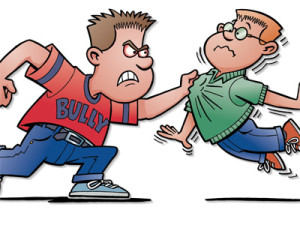



 hy love is so powerful, and why being rejected is so horribly painful. In a group of experiments,
hy love is so powerful, and why being rejected is so horribly painful. In a group of experiments, 
 ave like humans, and it remains to be seen whether Oreos are as addictive to humans as they are to rats, which is why the study is very questionable because it isn’t generalizable to humans.
ave like humans, and it remains to be seen whether Oreos are as addictive to humans as they are to rats, which is why the study is very questionable because it isn’t generalizable to humans. ine and saline. Yes the animals showed similar behaviours in response to the drugs and to the high-fat/high-sugar food, but these things cannot be equated if they are not directly compared. Furthermore, addiction is completely relative. A better comparison would be a study on how how hard a rat will work for Oreos versus cocaine.
ine and saline. Yes the animals showed similar behaviours in response to the drugs and to the high-fat/high-sugar food, but these things cannot be equated if they are not directly compared. Furthermore, addiction is completely relative. A better comparison would be a study on how how hard a rat will work for Oreos versus cocaine. h University
h University but are sodium-rich, will cause your body to hang onto excess fluid. While neither of these body shifts are fat weight, they can create a bloated look, and make you feel heavy.
but are sodium-rich, will cause your body to hang onto excess fluid. While neither of these body shifts are fat weight, they can create a bloated look, and make you feel heavy. d you aren’t always in control of your food. Lastly, there’s emotional strings attached to holiday eating habits. If Grandma made it just for you, it gets a lot harder to refuse, especially if you have fond memories of eating it in years past.
d you aren’t always in control of your food. Lastly, there’s emotional strings attached to holiday eating habits. If Grandma made it just for you, it gets a lot harder to refuse, especially if you have fond memories of eating it in years past.



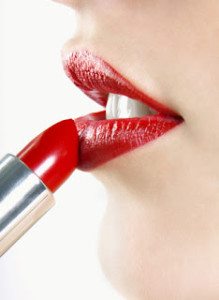

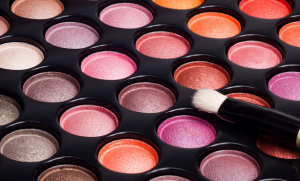




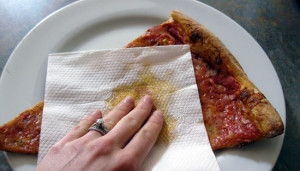



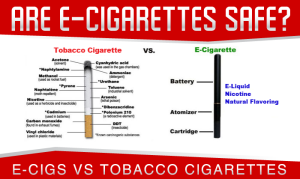





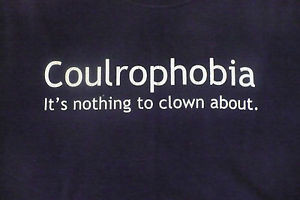
 “You can’t really tell who they are,” he says. “You can’t really see their face. You don’t really know what that all means behind the mask.”
“You can’t really tell who they are,” he says. “You can’t really see their face. You don’t really know what that all means behind the mask.”

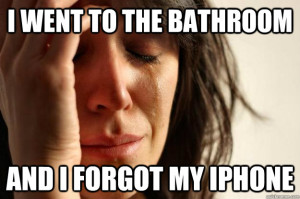 you’ve ever felt the desperate urge to check that new e-mail, Twitter reply or refresh your Instagram feed, it’s because of the dopamine in your brain. In a
you’ve ever felt the desperate urge to check that new e-mail, Twitter reply or refresh your Instagram feed, it’s because of the dopamine in your brain. In a 

